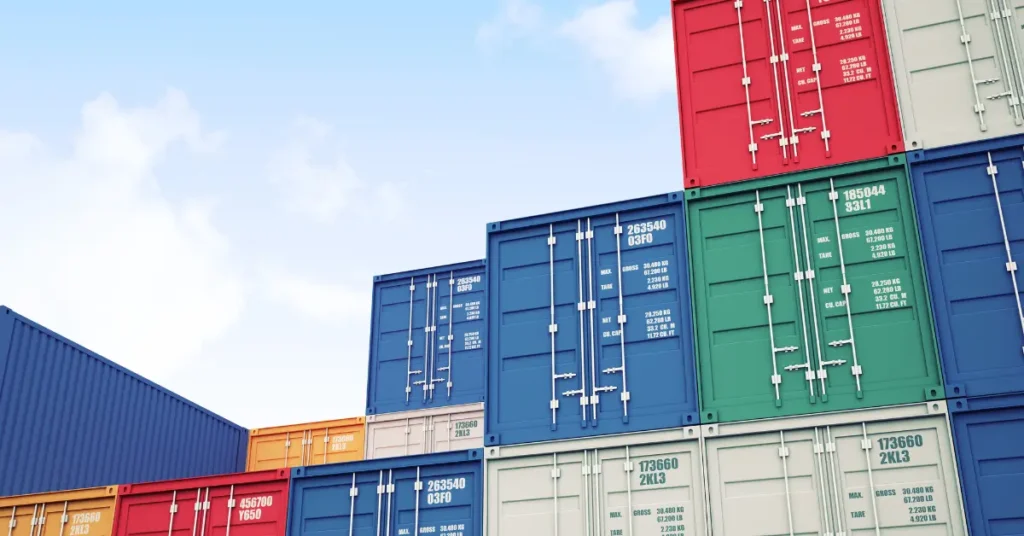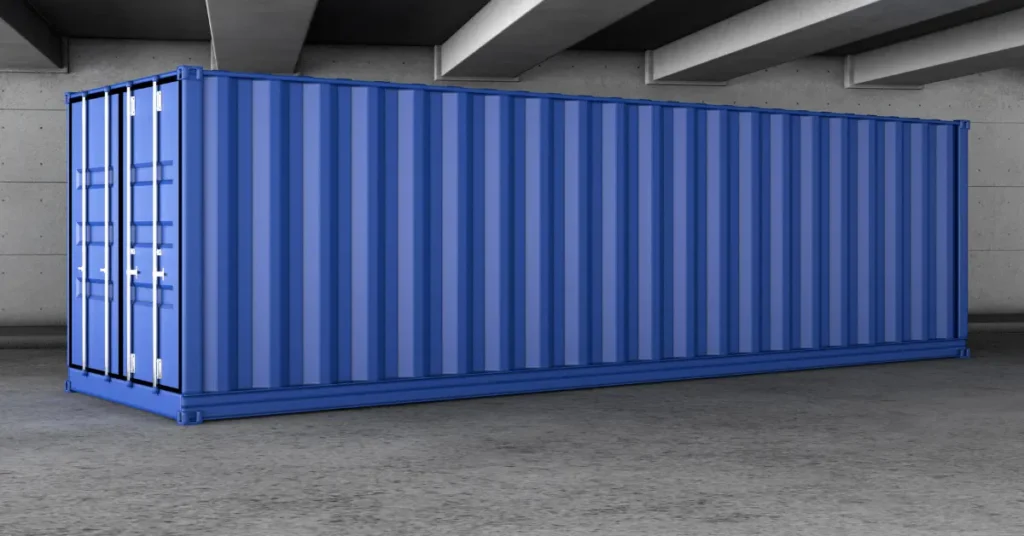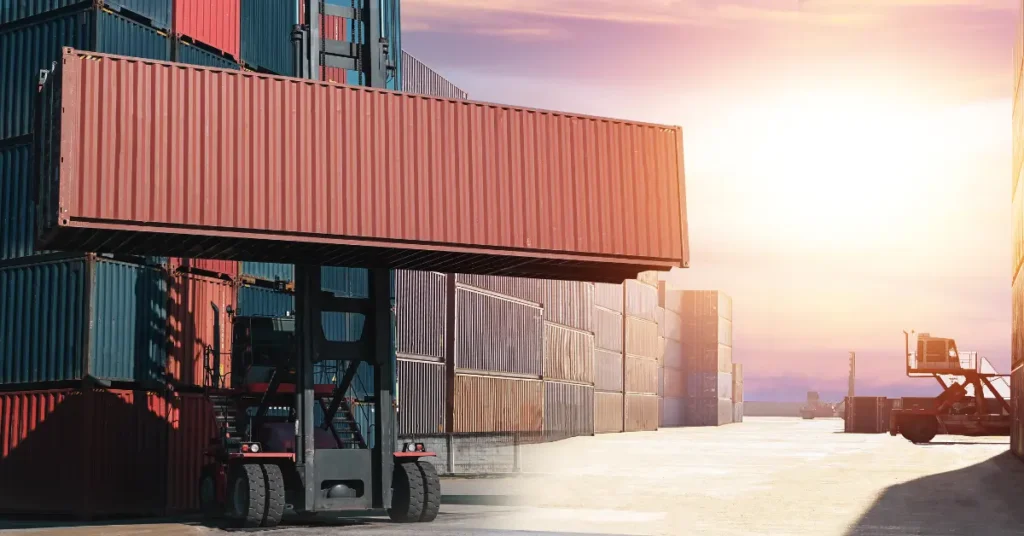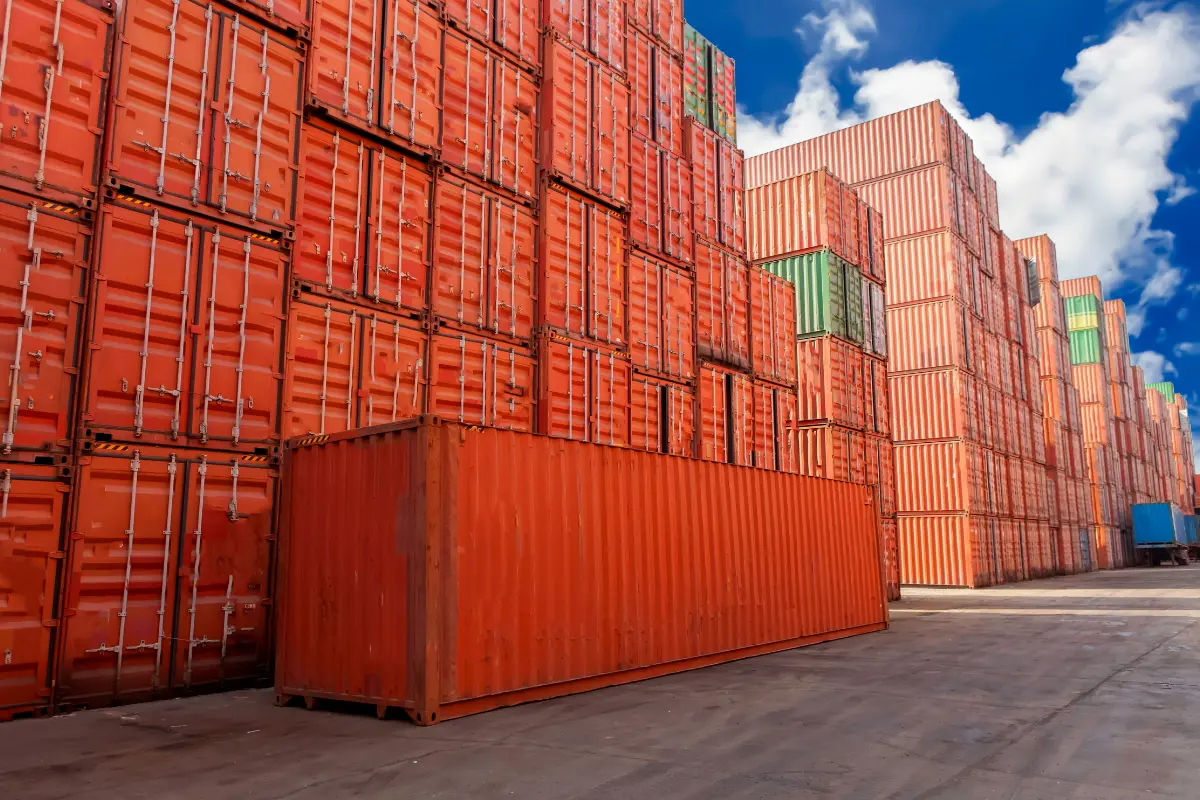40-foot cargo containers are ideal for individuals and businesses needing ample, secure storage space. With spacious interiors, these containers can accommodate large items or high inventory volumes, making them versatile for numerous applications. Their robust steel construction ensures long-term durability, protecting stored items from harsh weather conditions and external damage. Whether you need to store seasonal equipment, business inventory, or construction materials, these 40-foot storage containers offer unmatched efficiency. Their standardized dimensions make them stackable and easy to transport, adding to their practical storage solution appeal.
Features and Benefits of 40-Foot Cargo Containers
High-Capacity Storage for Large Volumes
One of the most significant advantages is their ability to handle large volumes, making them an ideal solution for substantial storage. These containers offer about 2,350 cubic feet of space, suitable for storing everything from bulky machinery to substantial quantities of merchandise. A high-capacity feature is particularly beneficial for businesses that require a consolidation point for goods before distribution, ensuring that space limitations never hinder operational capabilities. Emphasizing efficient container storage, these units provide a way to keep large stock volumes organized and accessible.
Durability and Weather Resistance
Steel storage containers are renowned for their robustness and ability to withstand adverse weather conditions, crucial for protecting valuable contents against environmental factors. The construction involves corrosion-resistant steel that ensures longevity and security against the elements, be it rain, snow, or extreme temperatures. Such durability makes them an excellent choice for both temporary and long-term storage solutions, where the container’s integrity must be maintained over time to protect the stored items.

Security Features to Protect Valuable Goods
When it comes to securing valuable goods, 40-foot shipping containers provide an exceptional level of protection. Whether used for retail storage, industrial equipment, or personal belongings, these containers offer multi-layered security against theft, tampering, and environmental damage. Below are key features that contribute to their superior safety:
- Lockable Doors – These containers have heavy-duty, high-security locks that help prevent unauthorized access. Built with reinforced steel locking rods, they deter break-ins by making forced entry difficult. Many units also support advanced locking systems, including combination locks, electronic keypads, and padlock enclosures for an extra layer of security. With these robust locking mechanisms, businesses and individuals can confidently store valuable inventory, tools, and personal belongings, knowing that access is tightly controlled.
- Tamper-Proof Seals—Many containers include tamper-proof seals to enhance protection against theft and unauthorized handling. These seals serve as an evident deterrent by clearly indicating if a container has been opened or compromised. Often used in shipping and logistics, these seals help maintain the integrity of the contents inside, ensuring that items remain untouched and unaltered during transit or storage. Combined with regular security checks, tamper-proof seals play a crucial role in deterring potential theft while also providing accountability and traceability in case of security breaches.
- Solid Steel Construction – One of the most significant security features of 40-foot shipping containers is their rugged steel construction. Made from corrosion-resistant Corten steel, these containers are designed to withstand impact, drilling, and cutting attempts, making them highly resistant to forced entry. The heavy-gauge steel walls, reinforced doors, and industrial-grade hinges further enhance security and durability. This level of protection ensures that stored items remain safe from break-ins, extreme weather, and accidental damage, making these containers an ideal choice for long-term and outdoor storage needs.
- Weatherproof Design – In addition to preventing theft, 40-foot shipping containers are built to withstand harsh environmental conditions. Their weatherproof construction includes sealed doors, moisture-resistant coatings, and corrosion-proof materials, ensuring that valuable goods are protected from rain, snow, extreme temperatures, and humidity. This feature particularly benefits businesses storing perishable goods, sensitive equipment, or essential documents. By shielding contents from weather-related damage, these containers provide a secure and controlled storage environment for a wide range of applications.
- Versatile Security Options – Modern shipping containers can be equipped with customizable security solutions, such as alarm systems, surveillance cameras, and motion detectors, to enhance security further. These additional security measures help monitor activity, deter unauthorized access, and provide real-time alerts in case of suspicious movement. Businesses using shipping containers as on-site storage can integrate innovative security technology, such as remote access controls and GPS tracking, ensuring that their assets remain monitored and protected 24/7.
Incorporating these advanced security features offers a comprehensive solution for safeguarding valuable goods. Their highly secure design, reinforced construction, and customizable security options make them a top choice for businesses, construction sites, and personal storage needs.
Best Uses for 40-Foot Cargo Containers
Warehouse Storage for Inventory Management
Durable storage options serve as an exceptional solution for managing inventory in warehouse settings. Their ample space allows for the systematic organization of goods, from palletized items to bulk materials. An organized approach not only streamlines the retrieval and tracking of inventory but also maximizes the efficiency of the warehouse space. By converting these into dedicated storage units for different types of products, businesses can improve the accuracy of stock levels and reduce the time spent on inventory management tasks.
Construction Site Applications
These warehouse container storage can be customized for various storage and operational purposes, allowing contractors to streamline their workflow while ensuring security. Below are some of the most effective ways construction sites can utilize these containers:
- Tool Storage – One of the primary concerns at any construction site is ensuring that hand tools and power equipment remain secure, organized, and protected from theft or weather damage. Shipping containers can be fitted with shelving, pegboards, and lockable compartments to accommodate different tools, from drills and saws to measuring instruments and fasteners. A well-organized tool storage container saves time and enhances efficiency by reducing the need to search for misplaced items. Additionally, by installing security cameras or alarm systems, contractors can safeguard expensive tools from theft, minimizing replacement costs and disruptions to work schedules.
- Material Warehouse – Construction materials like steel beams, plywood, insulation, and cement bags require dry, organized, and secure storage to maintain their integrity and prevent damage. A 40-foot shipping container serves as a mini-warehouse, offering ample space for stacking and sorting essential materials. This prevents exposure to moisture, extreme temperatures, and potential contamination, which can degrade the quality of construction supplies. Furthermore, these containers help streamline inventory management, making tracking available materials easier and reordering supplies before shortages cause project delays. Construction teams can access and retrieve materials quickly by utilizing labeled sections and racks within the container, optimizing site operations.
- Mobile Office – Managing a construction project requires constant supervision, documentation, and coordination among teams, which makes having a dedicated office space on-site essential. Shipping containers can be converted into mobile offices, complete with desks, chairs, filing cabinets, and even electrical installations for lighting, computers, and air conditioning. This setup provides a comfortable and functional workspace for site managers, engineers, and supervisors to conduct meetings, review blueprints, handle paperwork, and communicate with stakeholders. The portability of these container offices allows them to be relocated as the project progresses, ensuring that management teams remain close to the action. Adding windows, insulation, and internet connectivity further enhances functionality, making them an indispensable resource on construction sites.
- Machinery Depot – Large construction machinery, such as concrete mixers, welding machines, compressors, and generators, needs a secure storage space when not in use. A shipping container acts as a protective depot that shields heavy-duty equipment from rain, dust, and theft, thereby extending its lifespan and ensuring it remains in optimal working condition. These containers can be retrofitted with ramps, reinforced flooring, and ventilation to accommodate heavy machinery, making it easier to store and retrieve large equipment as needed.
- Safety Gear Hub – Worker safety is a top priority on construction sites, and ensuring that protective equipment is accessible and well-maintained is crucial. A designated safety gear storage container provides a centralized hub for helmets, gloves, safety vests, harnesses, goggles, and respirators, ensuring all personnel have the necessary equipment before stepping onto the worksite. This setup also allows for systematic inventory checks, ensuring that safety supplies are regularly inspected and replaced when needed. By keeping gear properly organized, contractors can reinforce safety protocols and reduce the likelihood of injuries or compliance violations. In addition, having a marked safety station makes it easier for workers to locate and use the correct gear, promoting a safer working environment.
By utilizing 40-foot shipping containers, construction teams can create secure, organized, and multipurpose storage spaces that enhance efficiency and safety on-site. These containers help reduce operational delays, minimize material loss, and ensure smooth workflow, making them an invaluable asset to any construction project, large or small.
Mobile Storage Solutions
Storage at temporary job sites, such as event spaces or building sites, where adaptability is essential, has been transformed by portable 40-foot containers. These containers can be easily transported and quickly set up, providing immediate storage space wherever needed. Their robust design ensures that materials stored inside are protected from theft and weather, making them an indispensable tool for project managers and event organizers.

Renting vs. Buying 40-Foot Shipping Containers
Pros and Cons of Renting
It allows companies to scale up or down depending on project demands without committing to a long-term investment. Additionally, renting can cover maintenance and replacement responsibilities, which are typically handled by the rental provider, ensuring that businesses always have access to containers in optimal condition. However, renting might become less economical than purchasing for projects that require prolonged use of containers.
Advantages of Buying Cargo Containers
Ownership eliminates ongoing rental fees and gives companies complete control over customization, such as adding insulation, lighting, or shelving systems tailored to specific storage needs. Moreover, owning containers can offer financial benefits like depreciation deductions on tax returns. While the initial outlay is higher, the long-term savings and usage flexibility without contractual limitations can be substantial.
Factors to Consider
Deciding whether to buy cargo containers or opt for shipping container for rent depends on several factors. The duration of usage is a primary consideration—short-term needs generally favor renting, while long-term storage justifies purchase. Financial health, available capital, and storage flexibility are crucial in this decision. Businesses must evaluate their current and anticipated storage requirements against their budgetary constraints to make an informed choice that aligns with operational strategies and financial planning.
Cost Analysis
This analysis should account for the total cost of ownership, including purchase price, maintenance, and potential modifications versus rental expenses over the container’s expected use period. The residual value of 40-foot conex containers should be considered, as high-quality steel containers maintain significant resale value, potentially offsetting some of the initial purchase costs if the business decides to sell later.
Future Trends in 40-Foot Cargo Container Utilization
Innovations in Container Technology
Innovations such as smart containers equipped with IoT sensors are on the rise. These sensors monitor conditions inside the containers, such as temperature and humidity, and track their location in real time. This technology not only improves the security and management of the stored goods but also optimizes logistics operations by providing valuable data that can be used to streamline supply chain processes.
Emphasis on Eco-Friendly Solutions
As industries continue to focus on sustainability, the use of large shipping containers in eco-friendly applications is expected to grow. Modifications that include solar panels, rainwater harvesting systems, and green roofs transform these containers into self-sustaining units that can significantly reduce the carbon footprint of traditional storage and building methods. Green innovations align with global efforts to promote environmental responsibility while maintaining the versatility and durability that containers are known for.
Expansion into Non-Traditional Industries
They are increasingly adopted in residential and community projects, such as affordable housing, schools, and healthcare facilities, especially in areas requiring rapid deployment or temporary solutions. Such a trend is facilitated by the containers’ modular nature, allowing them to be easily converted and stacked to create larger, cost-effective structures that are quick to assemble.
Global Standards for Container Modification
As the modifications become more commonplace, there is a growing need for standardized regulations and practices to ensure safety and quality across the industry. Developing these standards will help streamline the modification process and encourage innovation while maintaining safety protocols.

With the versatility to meet diverse needs and the potential for customization and technological integration, 40-foot cargo containers stand out as a fundamental resource in the landscape of global commerce and sustainable practices. They meet the immediate demands of storage and transport and anticipate the needs of a changing world, proving that their role extends far beyond simple storage solutions.

 Receive a Quick Quote
Receive a Quick Quote


 ” -Zachary
” -Zachary